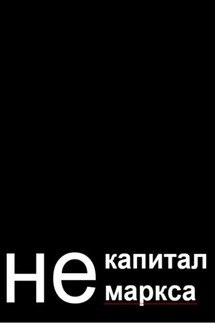The General Theory of Capital: Self-Reproduction of Humans Through Increasing Meanings - страница 39
Knowledge reveals the causes of phenomena and enables people to master them and turn them into effects. Every technology is based on the transformation of natural and cultural phenomena into effects:
“… The base concept of a technology—what makes a technology work at all—is always the use of some core effect or effects. In its essence, a technology consists of certain phenomena programmed for some purpose. I use the word ‘programmed’ here deliberately to signify that the phenomena that make a technology work are organized in a planned way; they are orchestrated for use. This gives us another way to state the essence of technology. A technology is a programming of phenomena to our purposes” (Arthur 2011, p. 51).
The programming of phenomena is done by constructing causal models—event patterns and action programs. In an event pattern, the cause is related to the phenomenon; in an action program, the action is related to the effect.
Material technologies are based on material phenomena. For example, the efficiency of a watermill depends on how it uses the fall of water under gravity. The undershot wheel can be placed directly in the water flow, simplifying the design of the mill but increasing the likelihood of breakdowns. The overshot wheel requires the construction of a dam and canal to bring water to the top of the wheel. Historically, undershot wheels preceded overshot wheels and were long considered more efficient until John Smeaton showed in 1759 that the efficiency of overshot wheels was 52 to 76 percent, compared to 32 percent for the best undershot wheels (Smil 2017, p. 152).
Social technologies are based on social phenomena—for example, we will show that money is based on the phenomena of use and exchange value.
Abstract technologies are based on abstract phenomena. The Antikythera mechanism, with its gears and algorithms, is based on the phenomena of celestial mechanics. This mechanism, developed in the 2nd century BC and recovered from a sunken ship in 1900, made it possible to calculate the dates of 42 astronomical events, including the dates of future solar and lunar eclipses.
The same level of complexity may be characterized by different levels of efficiency: there can be more and less effective workers with the same skills and tools. Increasing efficiency does not require greater complexity. But increasing complexity requires greater efficiency. Based on the principle of least action, people increase the complexity of their activities only when it is necessary to increase efficiency. The complexity of meanings increases to the extent necessary to increase their effectiveness, that is, to more extensively master phenomena.
By economy we understand the relationships between people with respect to technology, and the activities that arise from these relationships. The economy is the process by which people accumulate, select and apply technologies: it is the result of a long history of the division of activities or, as it is commonly called, division of labor. It must be clarified that the division of activities consists in a multiplication of material, social and abstract technologies. The division and addition of activities is not reduced to specialization and cooperation: every day new features of this or that activity appear, but not all of them are retained in the socio-cultural order as separate types of activity. Economic activity is not limited to production, it also includes consumption and circulation—insofar as they arise from relationships related to technology and its products.







